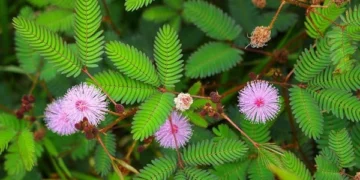In an exciting breakthrough for entomologists and biodiversity researchers, a new species of butterfly has been discovered in Waterton Lakes National Park, located in the southwestern corner of the Canadian province of Alberta. The species, scientifically named Satyrium curiosolus, has also been given a more poetic and descriptive common name: the “Curiously Isolated Hairstreak”.
This discovery not only expands the catalog of known butterfly species in North America but also holds significant implications for conservation biology, evolutionary research, and Canada’s native biodiversity. The finding highlights the importance of preserving remote ecosystems, where undiscovered or rare species may still thrive.
Discovery Location: Waterton Lakes National Park
The Waterton Lakes National Park, where the new species was discovered, is part of the Waterton-Glacier International Peace Park, a UNESCO World Heritage Site shared between Canada and the United States. Known for its rugged mountains, lush valleys, and diverse plant and animal life, the park provides a pristine environment ideal for scientific study.
Researchers involved in the discovery were conducting a biodiversity assessment when they encountered a butterfly that appeared visually similar to the known Half Moon Hairstreak (Satyrium semiluna), a common hairstreak butterfly species found across the western parts of North America. However, subtle differences in wing patterns and behavior prompted a deeper investigation.
What Makes the “Curiously Isolated Hairstreak” Unique?
Though it closely resembles the Half Moon Hairstreak, the newly discovered Satyrium curiosolus is genetically distinct. Advanced genomic sequencing and DNA barcoding revealed that the two species diverged from a common ancestor approximately 40,000 years ago, during the last Ice Age. This lengthy period of genetic separation has allowed the Curiously Isolated Hairstreak to evolve into a completely unique species.
Key Characteristics of Satyrium curiosolus:
- Wingspan: Approximately 25–30 millimeters, similar in size to its relatives
- Coloration: Brownish-grey wings with subtle, iridescent highlights and a faint orange crescent on the hindwings
- Habitat Preference: Open grasslands and subalpine meadows in high-altitude zones
- Host Plants: Likely dependent on specific native wildflowers for egg-laying and caterpillar development, though further research is ongoing
A Rare Species with a Narrow Range
One of the most remarkable aspects of this discovery is the butterfly’s highly limited geographic distribution. So far, the Curiously Isolated Hairstreak has been found only in a small area called the Blackstone Fan within Waterton Lakes National Park. This isolated habitat — located in a remote alpine zone — appears to have served as a refuge during glacial periods, allowing the species to evolve separately.
Researchers believe that the combination of geographic isolation, environmental stability, and specific ecological conditions has contributed to the butterfly’s survival and genetic uniqueness over thousands of years. However, these same factors now pose a risk to its continued existence.
Conservation Concerns: A Species at Risk
Due to its limited population size, restricted habitat, and low genetic diversity, experts are urging that Satyrium curiosolus be formally classified as an endangered species. Conservation biologists warn that the butterfly is highly vulnerable to:
- Climate change, which could alter the delicate alpine environment it inhabits
- Habitat disturbance from tourism, development, or wildfires
- Inadvertent hybridization with closely related species, which could dilute its genetic identity
- Loss of host plants, which are critical for the butterfly’s reproductive cycle
Expert Recommendations:
- Immediate habitat protection measures should be implemented in and around the Blackstone Fan region.
- A long-term monitoring program should be launched to track population changes.
- Genetic preservation strategies such as captive breeding programs or gene banks may be explored in the future.
- Public awareness campaigns should highlight the importance of the species and its role in the ecosystem.
Why Is This Discovery Important?
1. Biodiversity and Ecosystem Health
Butterflies serve as important pollinators and indicators of environmental health. The presence of a unique, long-isolated butterfly like Satyrium curiosolus suggests that Alberta’s alpine ecosystems are rich, underexplored, and may hold further undiscovered species.
2. Scientific Insight into Evolution
The genetic divergence of this butterfly over 40,000 years offers a rare case study in speciation and evolutionary isolation. It helps scientists understand how species evolve in isolated habitats and adapt to niche environments.
3. Global Significance
With biodiversity declining worldwide, every new discovery emphasizes the need for conservation at a global scale. Canada, with its vast and varied ecosystems, plays a crucial role in preserving the planet’s biological heritage.
Canada’s Role in Butterfly Conservation
Canada is home to approximately 300 species of butterflies, many of which are endemic to specific regions. Over the past few decades, several species have faced declining populations due to climate change, habitat destruction, and invasive species.
To combat these threats, the Canadian Wildlife Service (CWS) and Parks Canada have intensified efforts to:
- Map and monitor butterfly populations
- Protect native flora that support butterfly lifecycles
- Restore degraded ecosystems
- Educate the public on butterfly-friendly practices, such as planting native wildflowers and reducing pesticide use
The discovery of Satyrium curiosolus further validates these efforts and underscores the critical importance of protected areas like Waterton Lakes National Park.
Next Steps: Further Research and Conservation Strategy
Scientists are now planning follow-up studies to better understand the behavior, breeding patterns, and ecological needs of the new species. A detailed population census is underway, along with research into its larval host plants and seasonal activity cycles.
Dr. Emily Rhodes, a conservation geneticist involved in the study, stated, “We must act quickly to protect this butterfly. Its very existence is a reminder that our planet still holds secrets, and with the right stewardship, we can preserve them for future generations.”
Conclusion: A Winged Wonder from Canada’s Wilderness
The discovery of the Curiously Isolated Hairstreak (Satyrium curiosolus) is a triumph for Canadian biodiversity and a reminder of nature’s resilience and complexity. Hidden away in a small alpine meadow, this delicate butterfly survived glacial ages and ecological changes to emerge as a species entirely its own.
Now, it faces new threats, not from nature, but from the human-driven forces of climate change and habitat disruption. As Canada takes the next steps to ensure its protection, the global conservation community watches with interest—and hope.

























